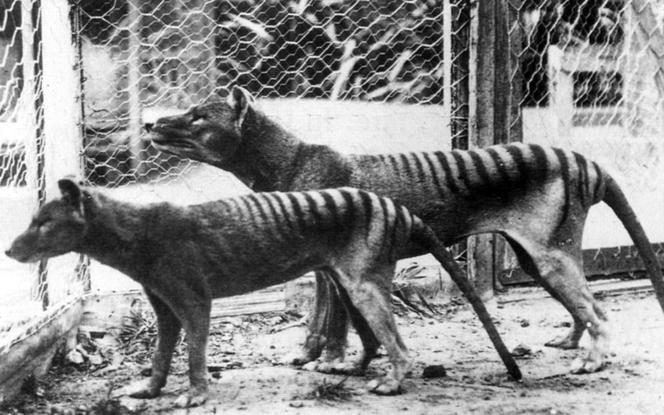


Determined to be the first to extract ribonucleic acid (RNA) from an extinct species, Emilio Marmol Sanchez with the Stockholm Paleogenetic Center and his colleagues naturally turned to the thylacine, or the Tasmanian tiger. "It constitutes a famous example of recent human-caused extinction. The last known individual died in 1936 at Hobart Zoo," he said. On September 21, in the Genome Research journal, the Swedish team presented the results of their work.
The aim was to prove that RNA, which is much more fragile than DNA, can also be recovered to shed light on the evolution of species that now only exist as specimens in collections. Why search for this molecule? It performs numerous functions within cells, including translation into proteins and regulation of the information carried by DNA. While the different tissues of an organism carry identical DNA, it is the activity profile of RNA that provides their specificity, and which could therefore provide more detailed information on their physiology.
Recent years have seen the development of paleotranscriptomics, the science of studying ancient RNA, as a complement to paleogenomics (the search for ancient DNA, such as Neanderthal DNA) or paleoproteomics (proteins encoded from DNA). The RNA of Otzi, the famous, over 5,000-year-old "ice man" was recovered in 2017, along with molecules from dogs and wolves.
Sanchez and his colleagues set their sights on the thylacine, the largest of the carnivorous marsupials, a specimen of which had been preserved in the Stockholm Museum since the 1890s. From muscle and skin samples, RNA sequences were successfully multiplied using PCR technology (the same used in some tests to detect the presence of SARS-CoV-2, an RNA virus) and sequenced. However, the researchers had to ensure that the amplified RNA did not come from contamination by microbes, fungi, other animals stored in the stockpile, or humans.
This is where work carried out on the other side of the world proved particularly useful. Andrew Pask and his team at the University of Melbourne proposed a first draft of the Tasmanian tiger genome in 2018, before publishing a more refined version in 2022. As DNA and RNA are complementary, the alignment of their sequences makes it possible to determine their origin by comparison. "Our study greatly benefited from this reference genome," said Sanchez, adding that the sequencing of the Tasmanian devil, an endangered marsupial species related to the thylacine, was also very useful for sorting through the RNA soup.
You have 49.57% of this article left to read. The rest is for subscribers only.
